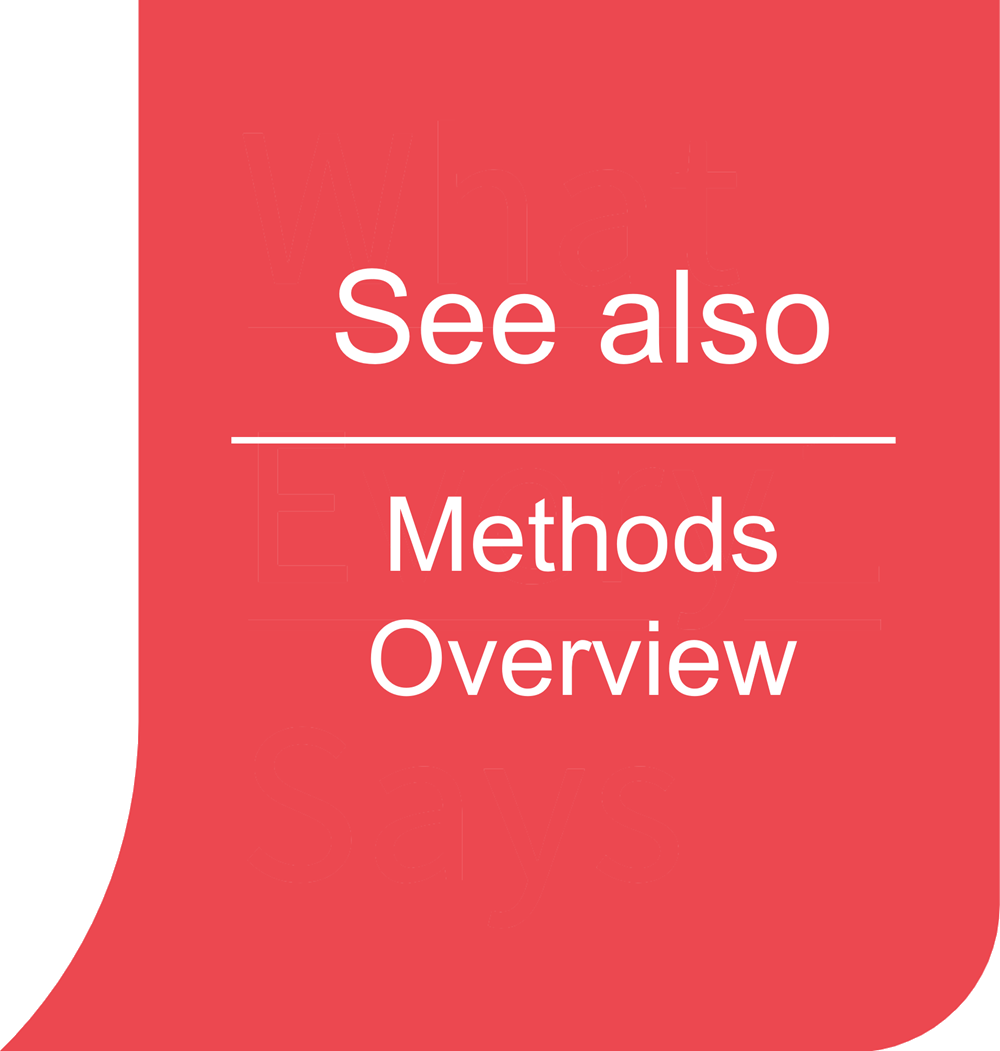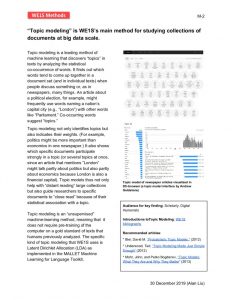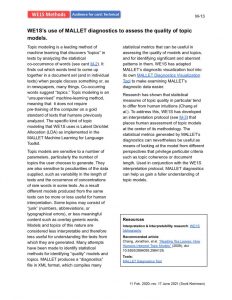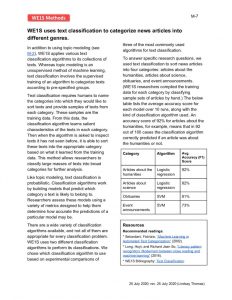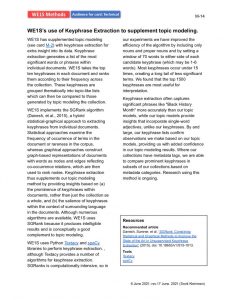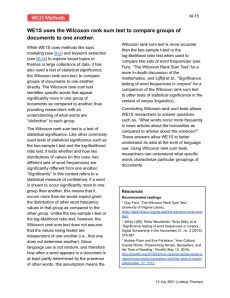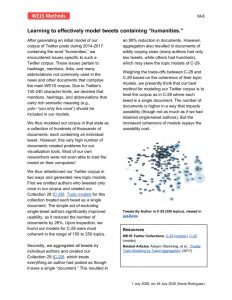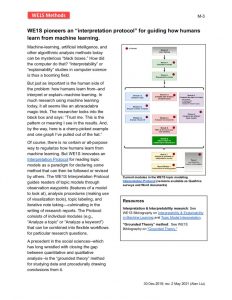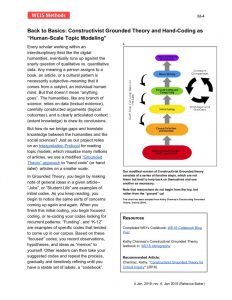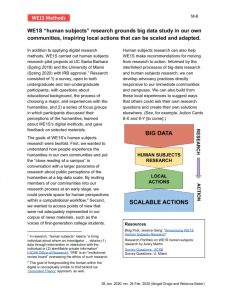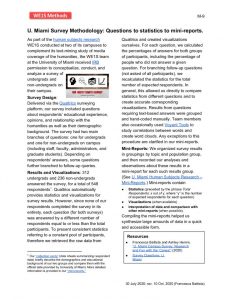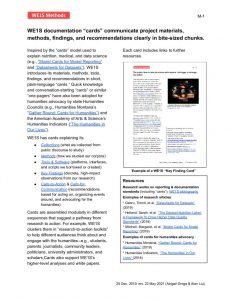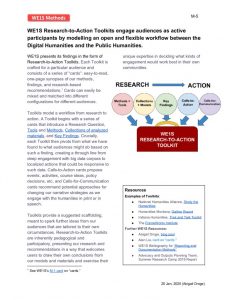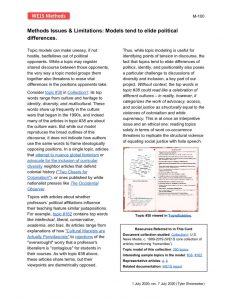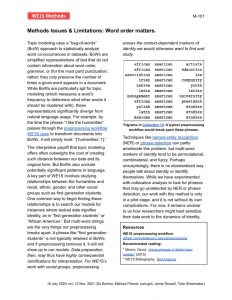WE1S uses digital humanities methods to conduct its research on large numbers of media and other documents mentioning the humanities. These “DH” methods in turn draw on computer science, information science, machine learning, text analysis, visualization, and other methods mentioned in our Bibliography. We’ve created explanation “cards” in plain language for many of these methods, each of which includes links to further information. (See our Methods card M-1 on “cards” as an explainability practice.) Some cards also point out important issues and limitations with methods.
Methods cards can accompany cards explaining collections and models, key findings, and software and tools as input components of WE1S Research-to-Action Toolkits, whose output components include Call-to-Action and Call-to-Communication recommendations.
Technical Methods for Machine Learning
The cards below briefly describe some of the WE1S project's main technical methods for machine learning.
Interpretive Methods
The cards below briefly describe some of the WE1S project's main methods for interpreting its research materials and machine-learning models.
Human Subjects Research Methods
WE1S conducted surveys and focus groups at two of our project’s home campuses (U. California, Santa Barbara, and U. Miami) in order to complement our big-data “distant reading” of media coverage of the humanities. The following cards briefling explain our methodology, which was approved by the appropriate campus Institutional Review Boards.
Reporting Methods
The cards below briefly describe some of the WE1S project's main methods for reporting its research and recommendations.
Methods Issues & Limitations
As with any methods for exploring and understanding large datasets of material, WE1S methods at once enable new kinds of research and impose constraints on what can be done. The following provide a few key considerations that our team members (and, we hope, outside readers) take into account when analyzing what our methods tell us about our data.


